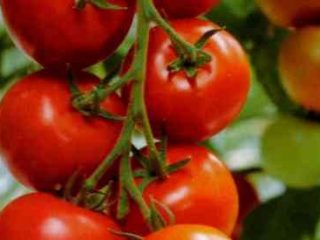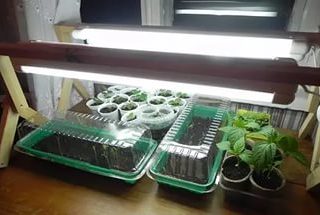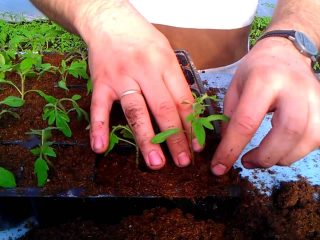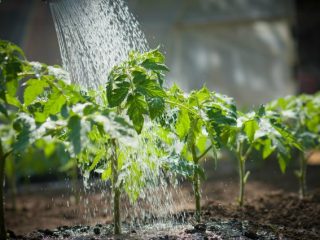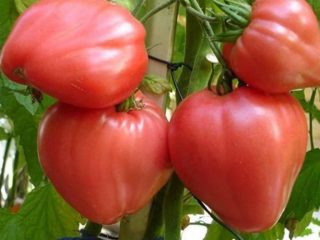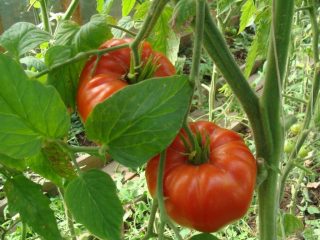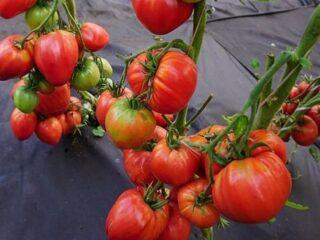Content
Food additives stimulate crops to grow, accelerate fruit formation, and high yields. Fertilizing tomatoes with nettle is one of the most effective. The weed grows in all soils, in addition, the preparation recipe is very simple.
The benefits of nettle as a fertilizer for tomatoes
Nettle has been used for many centuries - the unremarkable herb contains huge reserves of vitamins, macro- and microelements. Gardeners have become in the habit of throwing out weeds. However, medicinal decoctions, soups and fertilizers are prepared on its basis.

After watering the tomatoes with fertilizer, the shoots are irrigated with clean water.
The plant has a diuretic and hemostatic effect, accelerates metabolic processes and wound healing. Nettles are used to make brooms in baths, as it is believed that burns bring some benefit.
The vitamin complexes contained in the weed are valuable both for humans and for land crops. For example, nettle is interesting as a top dressing for tomatoes after planting in open ground.It saturates the soil with macroelements necessary for the growth of roots and shoots.
After decay, nitrogen is released into the soil - a substance responsible for the development of agricultural and ornamental plants. Nettle also contains potassium, which is involved in metabolic processes and stimulates fruiting.
Other elements present in the composition include:
- iron;
- magnesium;
- carbon.
The presence of nettles does not bode well - this is what some beginners think. In fact, its presence on the site repels pests and also creates the necessary conditions for the growth of other plantings. In such areas, the soil retains nutrients longer.

At the end, the container is filled with boiling water, leaving 8 cm from the edge
The cut weed is used for mulching. The plant layer prevents moisture evaporation, overheating and freezing of the stem and roots. Nettle mulch causes snails and slugs to turn 180 degrees away from plantings. The plant is dangerous for them.
When planting tomatoes, nettle is often used, placed in the hole as a nutritious fertilizer. As a result, young tomatoes quickly grow stronger and grow.
Advantages and disadvantages
Nettle is valuable for tomatoes and other crops. It grows everywhere - in wastelands, near swamps and ravines, in open glades, in forests.
Pros:
- safety for other landings;
- improving soil quality;
- saturation of roots with nitrogen, potassium and magnesium;
- simple recipe;
- possibility of fertilizing in any season.
Minuses:
- does not loosen the soil;
- has an unpleasant aroma.
Advice! To get rid of the repulsive smell, wood ash is poured next to the garden bed or valerian extract is used.
How to prepare nettle infusion for feeding tomatoes
To produce large fruits, tomatoes need fertilizing. But first you need to prepare it correctly. To do this, weeds that grow far from the highways are collected. To avoid burns, wear gloves and long sleeves. Nettles are cut before seeds form. The emphasis is on young grass.
When choosing nettle to fertilize tomatoes, you need to inspect for symptoms of the disease. If strange spots or fungal formations are detected, do not use vegetation. Healthy grass is trimmed with garden shears or a sharp knife.
Standard infusion
The nettles have been collected and stored - now you can move on to preparing fertilizer for the tomatoes. This is done as follows. Finely chop the grass and place it in a barrel, filling it halfway. Nettles need to be compacted to accommodate more shoots.
The liquids are allowed to brew for 15 days. When it turns brown and the foam disappears, the mixture is used to fertilize tomatoes. The infusion cannot be stored in metal containers - the material is prone to chemical reactions, during which useful substances are destroyed. It is better to use a plastic container or a traditional wooden barrel.
With bread
Tomatoes can be fed with nettle infusion and bread. The preparation recipe is almost identical to standard fertilizer. The difference lies in the addition of bread or loaf. The liquid will be ready for use in five days, as baked goods accelerate the fermentation process. The container is filled ¾ full.

Before application, the fertilizer is passed through gauze.
With dandelion leaves
Dandelion is another weed that has beneficial properties. In combination with nettle, the fertilizer has enormous nutritional potential. The leaves of the plant are used to prepare the product. They are dried and finely chopped. The shoots are mixed with nettles and placed in a container or barrel.
The fertilizing is allowed to brew for a week, stirring periodically. In addition to dandelion, you can use the following crops:
- chamomile;
- sagebrush;
- coltsfoot;
- yarrow.
St. John's wort and bindweed are not used because they contain toxic substances.
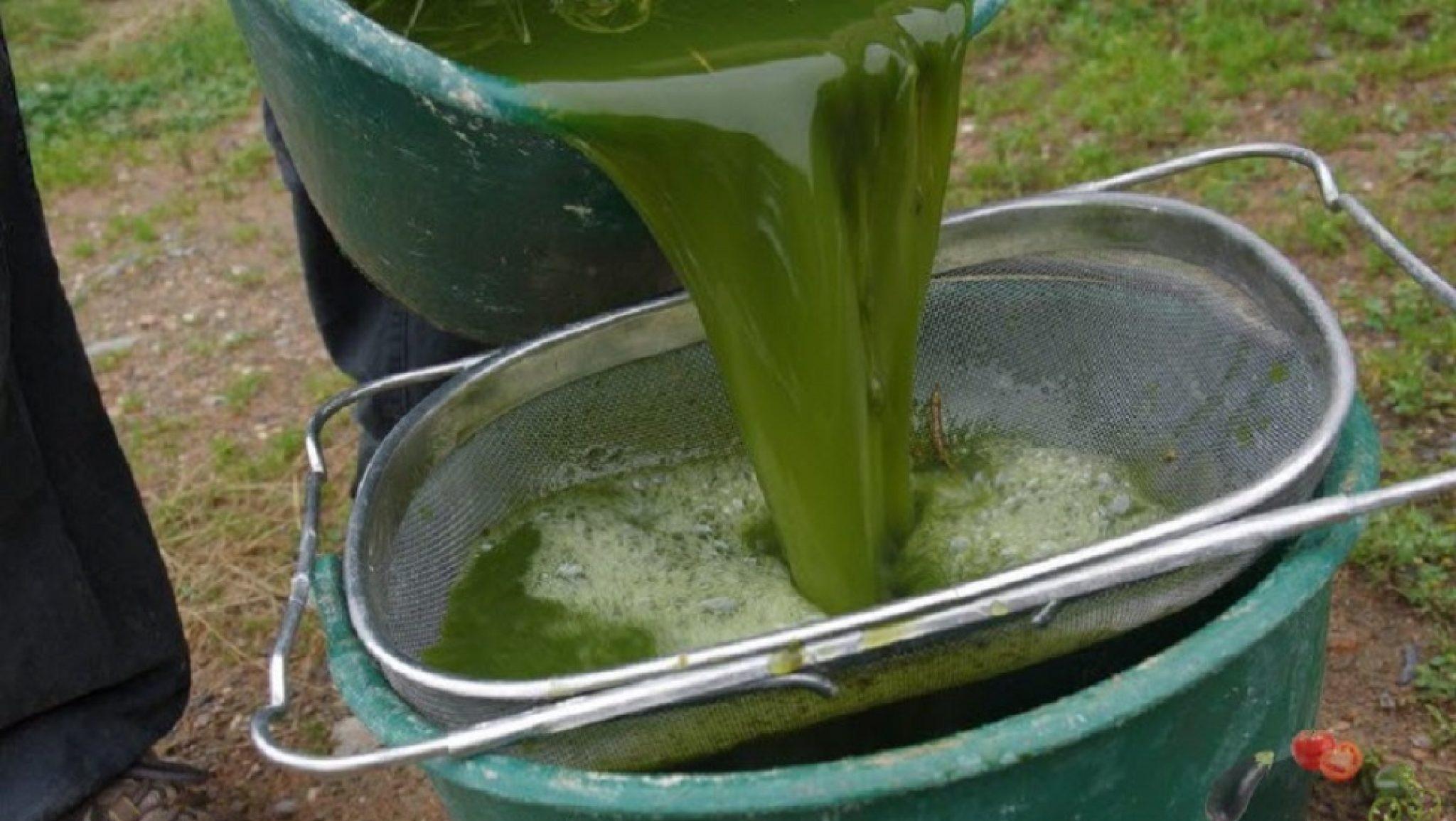
Cereals are avoided in the composition: during fermentation they form alcohol, which reduces the yield of tomatoes
With yeast
Tomatoes can be fed with nettle infusion with yeast. To do this, prepare a starter - a packet of yeast is dissolved in 3 liters of water and a spoonful of sugar is added. Four buckets of crushed nettles, 10 liters of cow manure, and 300 g of ash are poured into the container. Mix the ingredients thoroughly and cover with a lid. Fertilizing is insisted on the street for 15 days. The place should be sunny.
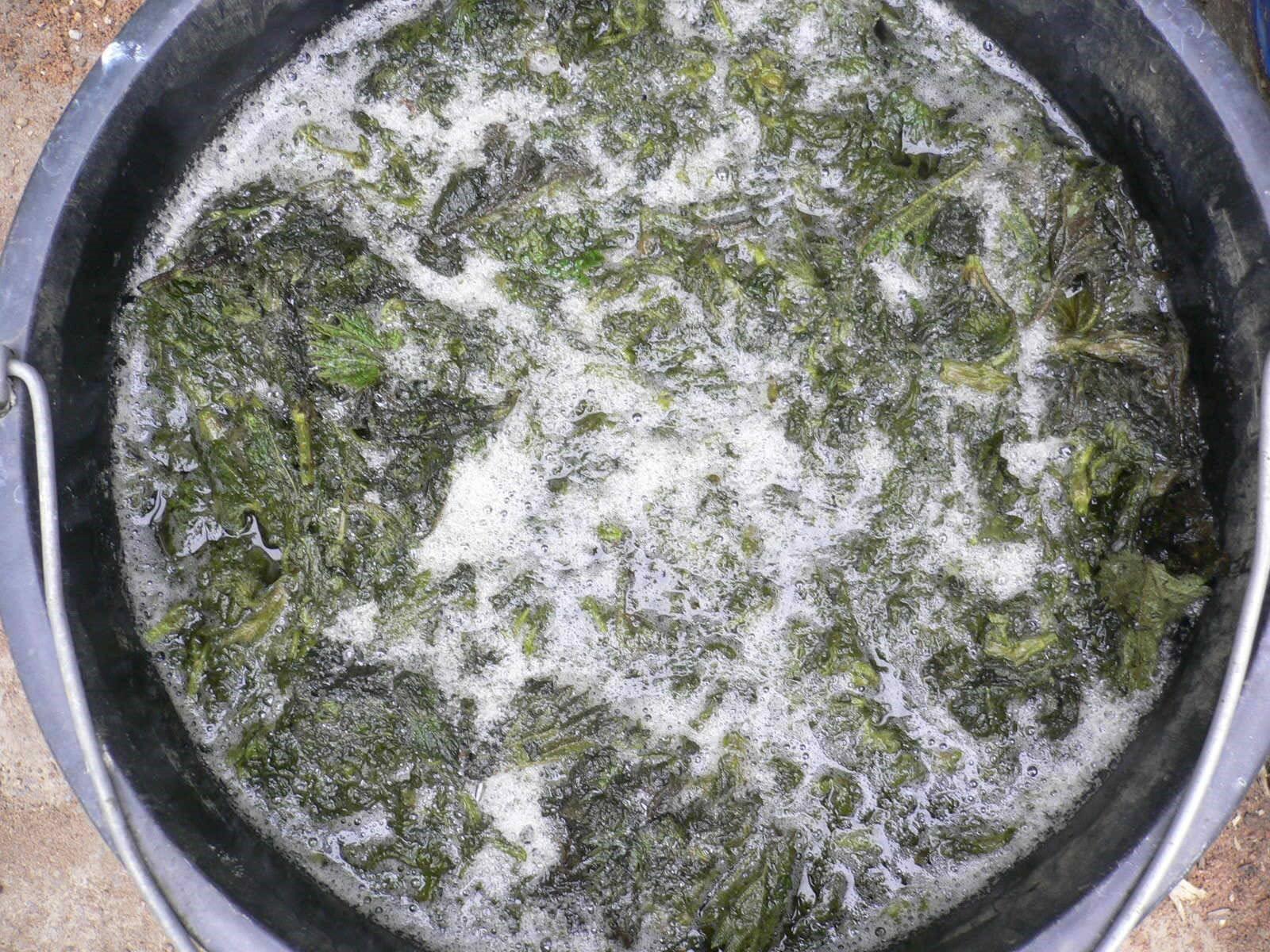
The liquid is stirred three times a week
Methane fermentation method
Feeding with methane fermentation is of the greatest value. Using this recipe, long-term storage of the mixture is achieved. As in previous cases, the main ingredient will be nettle.
For preparation, use a capacious container, place methane and fresh nettles in it. The weed quickly decomposes, releasing useful substances. To prevent them from evaporating, the container is covered with polyethylene film.
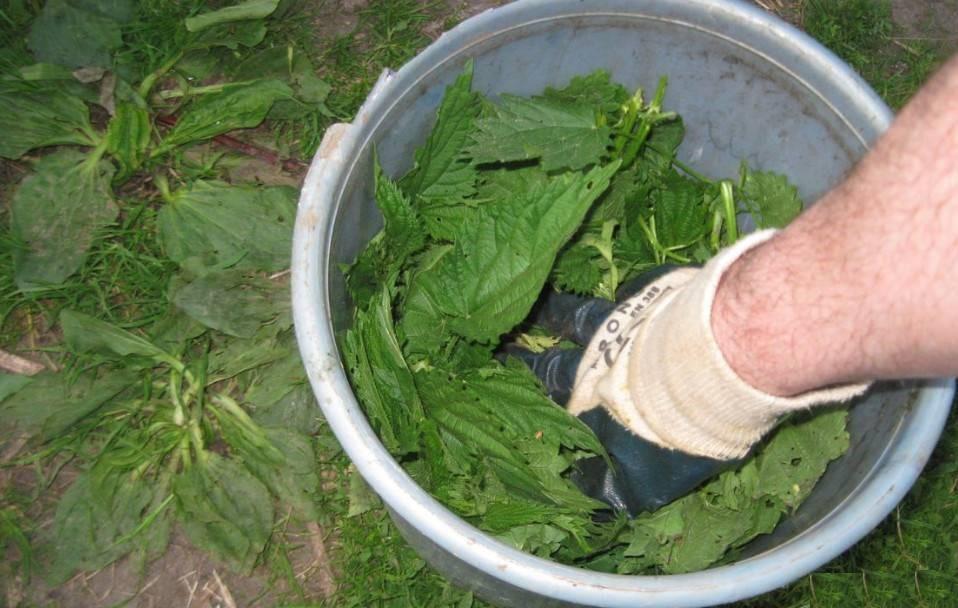
Processed products do not evaporate, since oxygen does not participate in the reaction
After two weeks, the feeding can be considered ready. It has a manure smell. The remaining grass can be buried between the rows. They will serve as an additional resource for the growth of tomato roots.
How to water tomatoes with nettles
After preparing the infusion, the question arises of how to use the fertilizer. When watering, the norm should be observed. The soil should not be rich in macronutrients, otherwise the tomatoes may react poorly. In addition, feeding is interesting for pests.
The mixture is poured under the root. Standard consumption is 1 liter per bush.
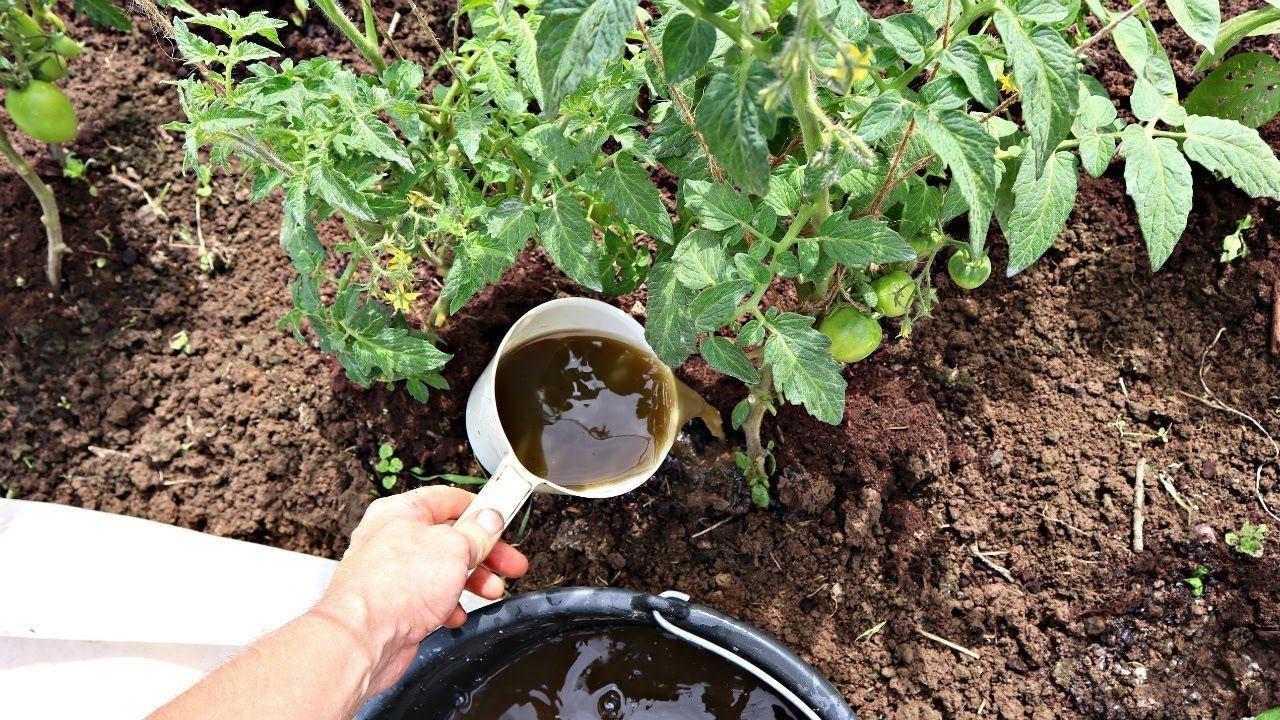
If the seedlings are young, 0.5 l is enough
Some people pour fertilizer directly onto the shoots. To do this, the liquid is first filtered and diluted with water in a concentration of 1:20. Tomatoes are watered twice a month.
The additive can be used throughout the growing season. The culture is not averse to tasting the phosphorus and potassium components contained in nettle. The infusion can be considered ready when it stops forming foam. For internal application - at the root - it is diluted with water in a ratio of 1:10. Water twice a month.
You can feed nettles both seedlings and tomatoes located outside. Young or mature bushes - it makes no difference. A few weeks after application:
- flowering improves;
- the immunity of tomatoes increases;
- the growth of fruits and green mass increases.
The work is carried out in the evening or in the morning, when the sun's rays do not interfere. Do not moisturize during the day to avoid burns. The infusion is used no more than once every two weeks. If you follow the application rules, the fruits will become larger and the taste will improve.
Storing finished fertilizer
Fertilizer should be stored outside or indoors near a sunny window. There is no need to transfer the remaining liquid - the fertilizer is left in the basement until the next season. It will contain fewer nutrients, but the liquid will still remain useful.
Conclusion
Fertilizing tomatoes with nettles can improve the soil composition and increase the number and diameter of fruits. Snails and slugs are afraid of this plant, which can be effective in combating them. There are several cooking recipes, and each is simple. The main advantage of the plant is that it can be found in any area.
Reviews about fertilizing tomatoes with nettles
